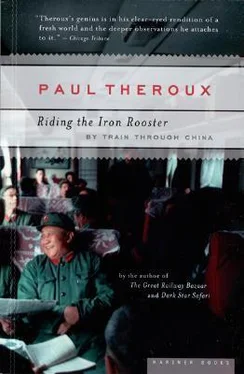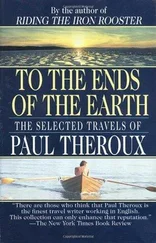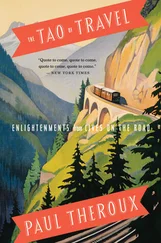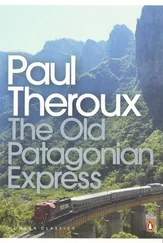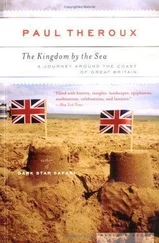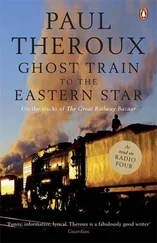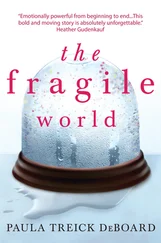On a back street of Nagqu I was accosted by some Tibetans who wanted to change money. They also had artifacts — copper tobacco tins and silver coins and Tibetan seals, for stamping messages or names onto documents. I bought a silver seal with a Tibetan motto that said, Worship the Sky for Enlightenment.
I wanted to hand out pictures of the Dalai Lama in this remote place, but to avoid attracting a crowd I followed individuals down the little icy lanes and, when there was no one else around, I whispered in phrase-book Tibetan, "Dalai Lama picture, Dalai Lama picture."
They hissed with pleasure as I handed over the pictures, and they always touched them to their foreheads before folding them into their quilted coats. They reacted to these pictures in a way that I found deeply moving. It was not their profuse thanks — though Tibetan gratitude was hardly ritualized: they were able to communicate great warmth in the simplest gestures. There was no question about their devotion to their god-king, the 14th Dalai Lama, Tenzin Gyatso.
They were like early Christians, and I was among them, encouraging them with little icons, spreading sedition. Virtually every Tibetan is a Buddhist and it is impossible to overestimate their love and respect for the Dalai Lama. The Panchen Lama, a political cleric, was in Peking, where he was reputed to be a member of the Central Committee. But this Dalai Lama had never capitulated to the Chinese. When he was attacked on St. Patrick's Day in 1959, he hurried away disguised as a herdsman on a horse, fleeing his Summer Palace, the Norbulingka, with thousands of his followers, while monks and warriors fought a rearguard action against the confused Chinese attackers. He has been in exile in India ever since, swearing that he will not return to Tibet until the Chinese have left.
Relations between Tibet and China had been uneasy from the seventh century (the Tang Dynasty) onward, and for the next 1300 years it is a history of patchy diplomacy, marriages of convenience and invasions (by the Chinese), using flimsy pretexts. Tibet was a sovereign country when the Chinese invaded in 1950. Tibet was also extremely isolated in every sense. There were no motor vehicles at all in Tibet. There were no schools (although monasteries provided education of a religious kind for novice monks and nuns). There were no banks. Money was not used much. There were no wages, for example — payments were usually made in kind, with barley, tea, yak butter and cloth. It was a medieval system, and the Dalai Lama had a divine right to govern. The class structure ranged from the nobility and a handful of rich aristocratic families to the lowest class of outcasts, whose single function in Tibetan society was to dispose of corpses.
The Chinese were eager to snatch Tibet and turn it upside down. "A good comrade is one who is more eager to go where the difficulties are greater," Mao had said. That exhortation had gotten Chinese settlers into Qinghai. Now the armies began to march into eastern Tibet. What good were swords and pikes against modern Chinese armaments? And when the Tibetans were overwhelmed, and they appealed to the U.N., and tried to publicize their case against the Chinese, the world turned its back while a Tibetan delegation signed a treaty that had been dictated by the victorious Chinese. No one had gone to Tibet's aid; and a few years later in the maniacal Maoist spasm known as Religious Reform, ancient monasteries were dynamited, monks were sent to work in factories, and all Buddhist rituals were banned, including all prayers and insignia. The Chinese believed that the liberation of Tibet was complete, especially when the humiliated Tibetans fought back in various uprisings in 1956 and were flattened.
Antireligious feeling in Tibet was a perfect frenzy during the Cultural Revolution. The few monasteries that remained were either pulled down or else used for secular functions. Pigs were kept in the most sacred chapels of the Drepung Monastery in Lhasa, and the Jokhang Temple, the holiest of holies, was renamed Guest House Number Five. Soldiers bivouacked in its chapels and cloisters. The Buddha statues were beheaded. The gold filigree altar relics were melted down. The Red Guards yanked down the ancient medical college, Mendzekhang on Chakpori Hill in Lhasa, and a television antenna was erected in its place. Except for the Potala, Lhasa was destroyed.
"It was a mistake," a Chinese official told me. He was not belittling the damage. This after all was a man who had lived through the Cultural Revolution in China. Part of the Great Wall had been pulled down and plenty of temples and monuments had been wrecked. The whole of China had been vandalized. So what were a few dusty shrines and painted statues to that?
What happened in Tibet was an excess. It was not an outrage in Chinese eyes. Many Chinese I spoke to could not understand why anyone would prefer an old Buddhist medical college to a tall new TV antenna bolted to a ferroconcrete block.
And official Chinese vandalism is unlike any other vandalism on earth. You imagine gangs of crazy chanting youths smashing their way into a monastery and kicking the slats out of it. But it wasn't that way. It was Chinese wrecking. When the order went out, Smash the feudalistic nests of monks! the soldiers, Red Guards and assorted vandals made chalk marks all over the monasteries — save these timbers, stack these beams, pile these bricks, and so forth. Brick by brick, timber by timber, the monasteries were taken down. The frugal, string-saving, clothes-patching, shoe-mending Chinese saved each reusable brick. In this way the monasteries were made into barns and barracks.
The Dalai Lama has stayed in exile, but some rebuilding has been carried out by Chinese who admit that wholesale destruction was a mistake. A little bit of old Tibet was given back. But schools were built, factories were put up, and army camps and gun emplacements sprang up everywhere in Tibet (in this way it greatly resembles Soviet-dominated Mongolia). And portraits of the Dalai Lama were banned. I was aware that in handing these pictures out I was breaking the law. But what the hell. They had nuisance value. They made the Tibetans happy. And they allowed me to feel like John the Baptist.
Nagqu has the only hotel worth the name, north of Lhasa, but even so I thought: Next time I'll bring a tent and a sleeping bag. Mr. Fu drove us out of Nagqu — perhaps a face-saving gesture, because a mile outside town he stopped the car and clutched his eyes.
"I cannot do it!"
And he slumped in the backseat.
I was happier than I had been since starting this trip on The Iron Rooster. I was driving, I was in charge, I was taking my time; and Tibet was empty. The weather was dramatic — snow on the hills, a high wind, and black clouds piled up on the mountains ahead. I also thought: I didn't die the other day.
Today, below the snowy and majestic Nyenchen Tanglha Range, nomads rode among their herds of yak, and the road was straight through the yellow plain. That tame road contributed to my feeling of well-being — it was wonderful to be in such a remote place and yet to feel so secure. Mr. Fu and Miss Sun were asleep in the backseat. There were no other cars on the road. I drove at a sensible speed towards Lhasa and watched the birds — hawks and plovers and crows. There were more gazelles, and once a pale yellow fox bounded across the road.
There was a sudden snowstorm. I went from a dry sunny valley, around a corner, into a black slushy one, the large cottony flakes whipping sideways. Mr. Fu, who was terrified of snow, mercifully did not wake. The snow eased; it became a dry flurry in a valley farther ahead, and then the sun came out again. Tibetans call their country "Land of Snows," but in fact it doesn't snow much and it never rains. The gales pass quickly. The Tibetans are not bothered by any of this. I saw children playing in this sudden storm.
Читать дальше
